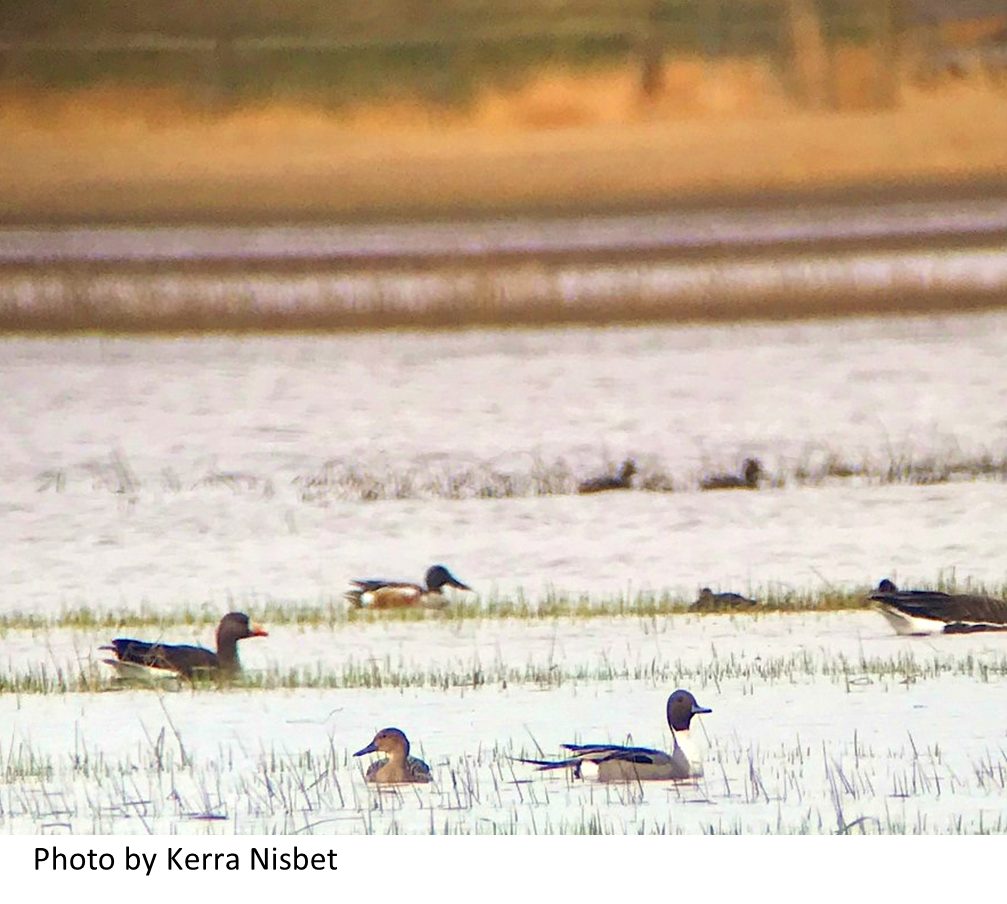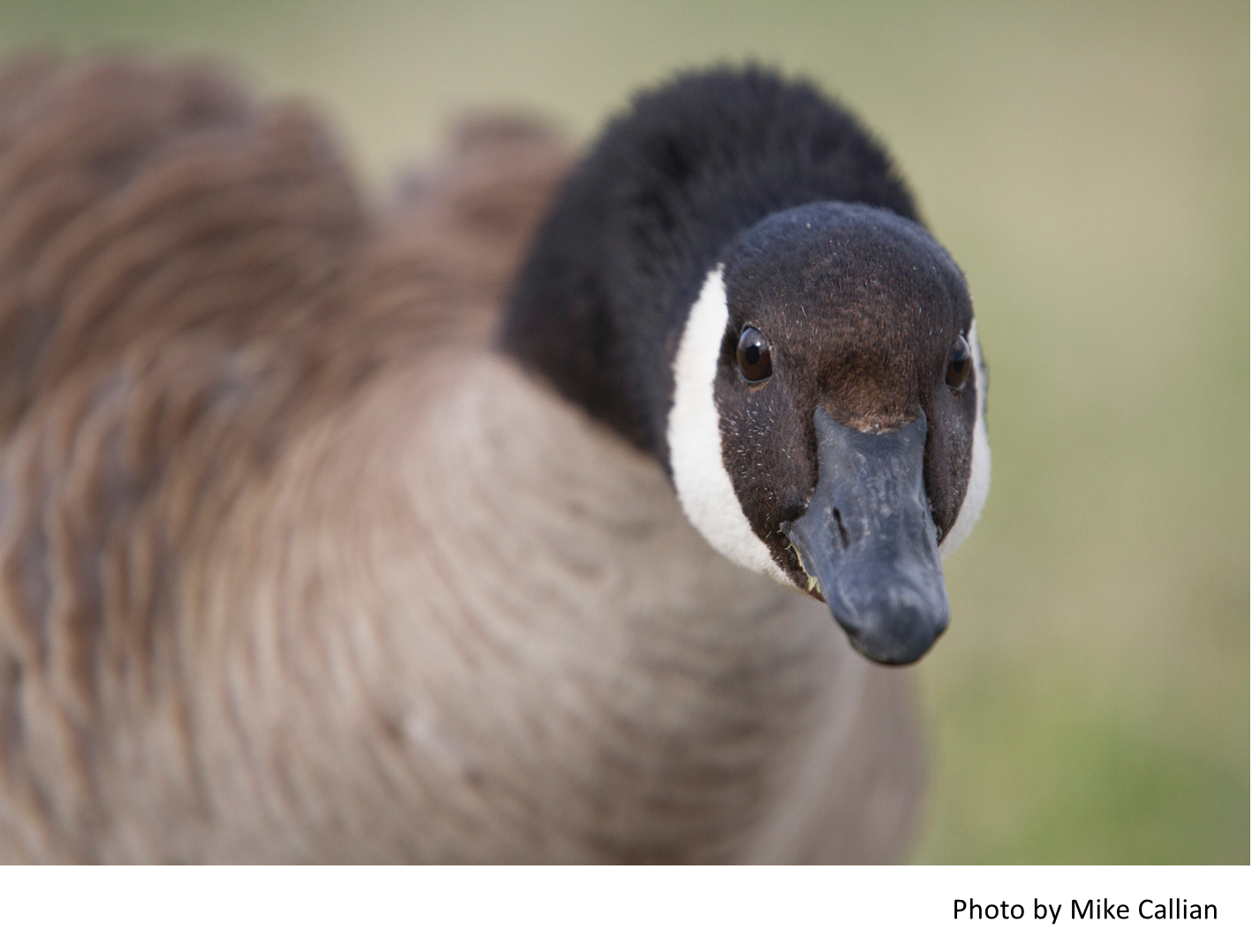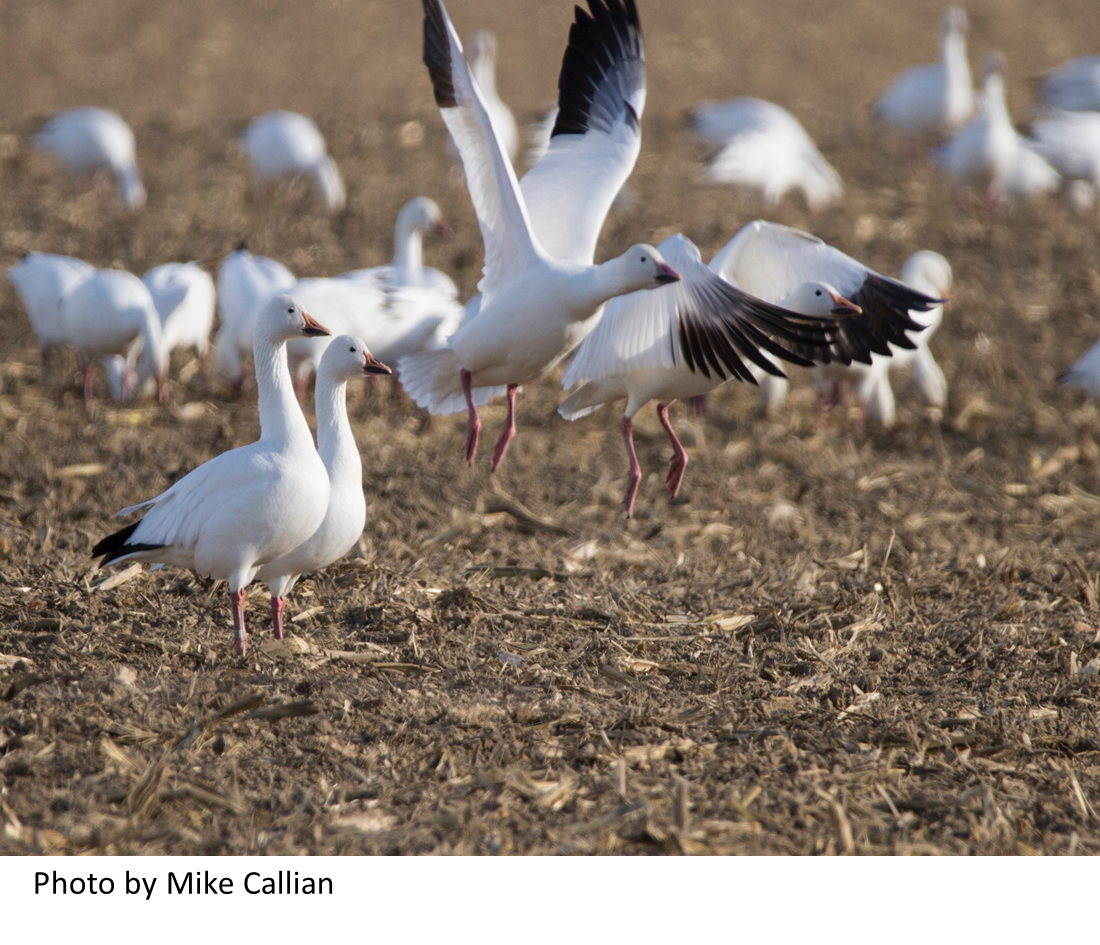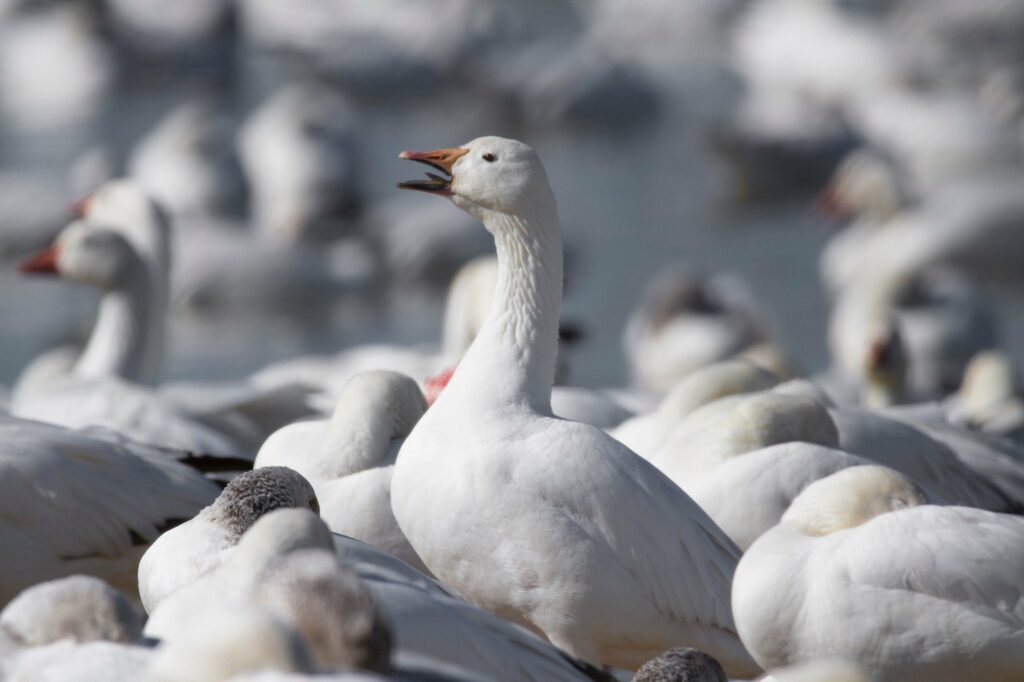Wetlands provide vital habitat for an abundance of aquatic and terrestrial species, including, migratory waterfowl (ducks, geese, and swans). Many of these important wetland ecosystems can be found nestled within the Prairie Pothole Region (PPR) of Alberta, Saskatchewan, and Manitoba in Canada, as well as North Dakota, South Dakota, Iowa, Minnesota, and Montana in the United States. So it almost doesn’t come as a surprise that the PPR provides suitable habitat for almost 50% of all North American migratory waterfowl populations to feed, breed, and stop-over during migration movements!
Migratory waterfowl participate in two large migrations annually, following environmental cues: flying south in the fall, and flying north in the spring. Notably, research has shown that Blue-winged Teal (the second most abundant duck in North America) migrate from Alberta to South America, a distance of almost 6,000 kilometres! This migration aids in the success of finding suitable breeding habitat, avoiding predators, and flexibility of movement in response to changing food availability and environmental conditions.

Waterfowl & Wetlands: What’s the Connection?
Waterfowl are vital components to a wetland’s biodiversity and productivity. When flying from wetland-to-wetland, waterfowl can help establish and/or increase biodiversity. A duck flying from one pond to another may introduce a new plant, amphibian, or fish species through transport by means such as, being stuck in a feather, on a foot, or through ingestion and excretion. This dispersal can also assist with adaptation to climate change, as species are slowly introduced to new areas, expanding their range and diversifying gene pools. Waterfowl also help with management of invasive pest species, often feeding on pesky insect larvae, invasive zebra mussels, weeds and their respective seeds.
Fun Fact: With all of the money that is invested annually into waterfowl hunting and the respective contributions to conservation, a single duck is worth $26 in the Canadian economy as per Duck’s Unlimited Canada.

Understanding Wetlands
In understanding the various positive effects waterfowl have on their habitat, it is important to also understand why wetlands are so essential. Wetlands are vital in the water cycle and assist in cleaning water drainage systems. Additionally, wetlands protect environments from flooding and drought, and act as a climate change prevention mechanism, as they capture and store large amounts of carbon, reducing atmospheric greenhouse gases. These wetland habitats provide a home for various flora and fauna, including aquatic plants, fish, amphibians, reptiles, birds, mammals, and invertebrates. It’s important that we continue to care for and protect sensitive wetland areas as they are crucial to the environment, and to preventing climate change.
How Waterfowl are Protected
Most migratory bird species in Canada are protected under the Migratory Birds Convention Act, 1994 (MBCA). Bird species not listed under this federal Act may be protected under provincial or territorial law, as well as the Convention on Biodiversity (CBD), or the Species at Risk Act, 2002 (SARA). In Alberta, waterfowl species are additionally protected under the Alberta Wildlife Act, 2000.

All waterfowl (ducks, geese, and swans) in the family Anatidae, are included in the migratory game bird family of the MBCA. The Act protects migratory birds, their nests and eggs anywhere they are found in Canada. It also prohibits the dumping of substances harmful to birds in water or areas frequented by them. Further regulations in the MBCA include the prohibition of killing, capturing, injuring, taking or disturbing of migratory birds or the damaging, destroying, removing, or disturbing of nests. The Alberta Wildlife Act prohibits the disturbance of wildlife habitation for all migratory game birds as defined in the MBCA throughout Alberta and throughout the year.
Birds may be additionally protected by other provincial and territorial laws and regulations. It is important to consult applicable legislation in the relevant jurisdiction, as it is your legal responsibility to know which laws may be significant to your projects.
Protection of Waterfowl at Work
During AJM’s spring field season, our specialists utilized nesting calendars and non-intrusive monitoring methods to determine the nesting activity of waterfowl and other migratory birds in areas where construction was to be completed. In doing so, AJM was able to make recommendations to ensure client compliance with the Migratory Birds Convention Act and the Alberta Wildlife Act by avoiding destructive or disruptive activities.

Much of AJM’s clientele and their respective projects work in and around vital wetland environments. Let AJM’s team of Wetland and Waterfowl Specialists assist you in mitigating disturbance and impact, while conserving and preserving these important species and their habitats. AJM is proud to support the efforts made by organizations such as Duck’s Unlimited Canada to conserve and protect valuable wetland habitats for waterfowl, wildlife, and people.
